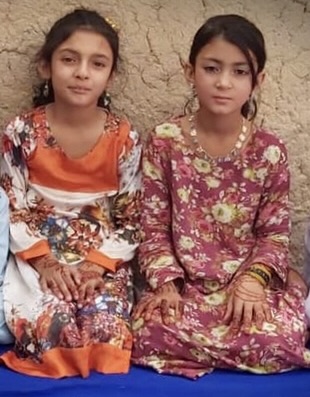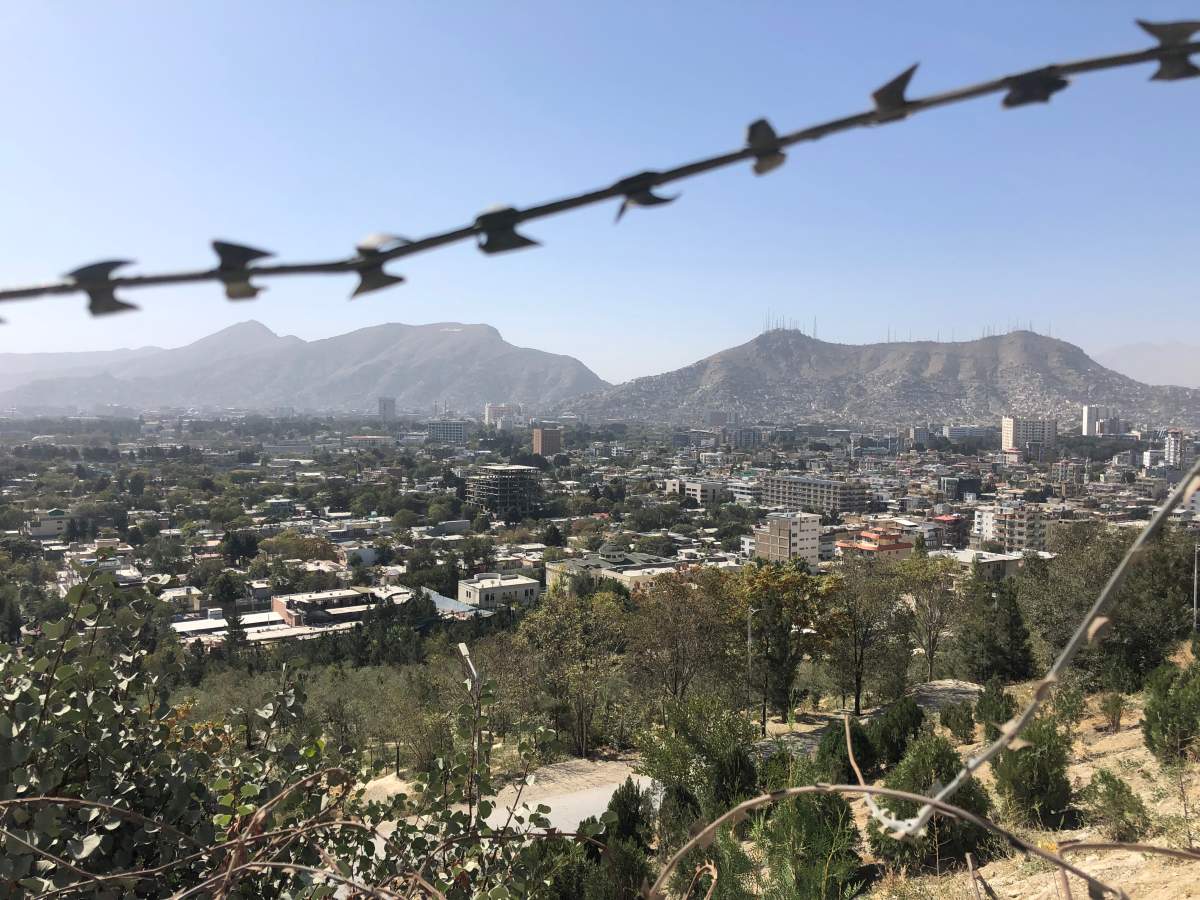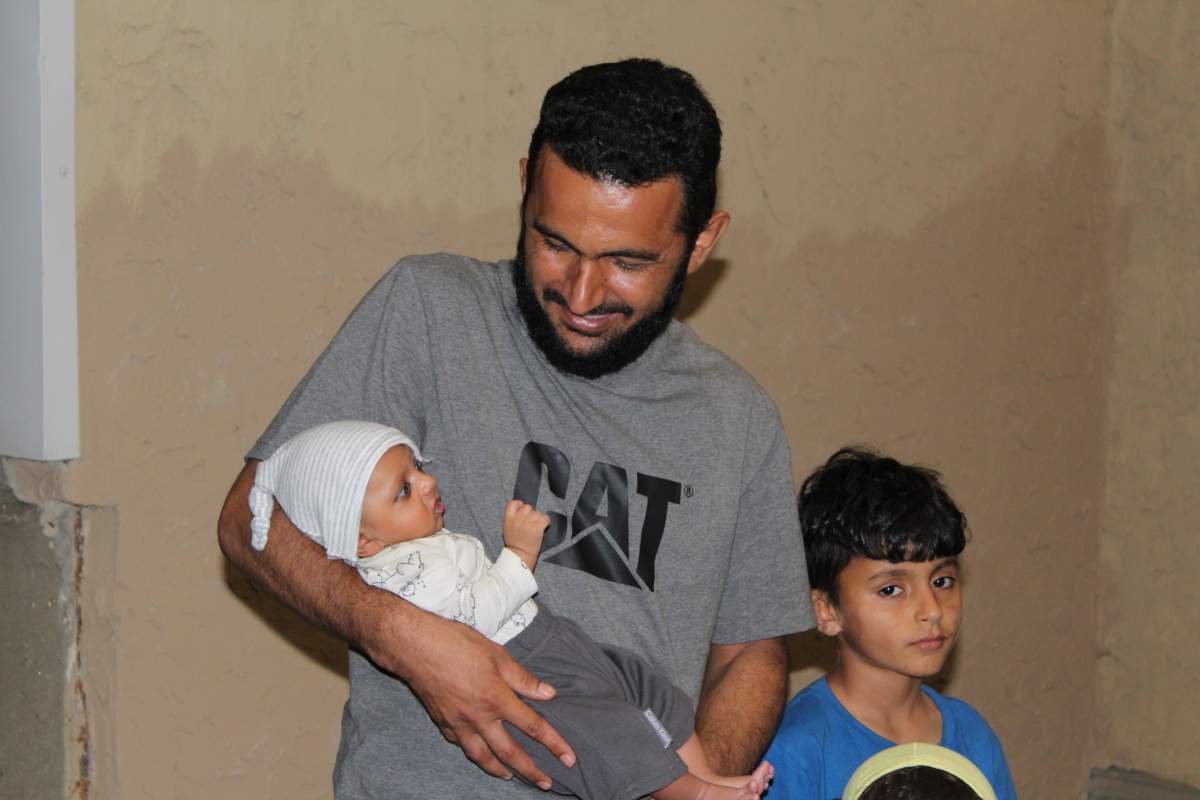Outside his apartment building in Edmonton, Bashir Ahmadi showed off his newborn and counted his blessings. Four months after arriving in Canada through the government’s Afghan resettlement program, he has a lot to be thankful for.

He has a job as a painting contractor, his eldest boy has started school and, last month, his wife gave birth to a son. The Taliban, who had threatened Ahmadi because he worked for the Canadian Forces in Kandahar, are now a distant threat.
“So far, I feel happy here,” he said.
But he admits his fresh start has been bittersweet because of the absence of his daughter, Nazifa. The Taliban killed her at a military checkpoint on Dec. 10, a painful reminder of the dangers of leaving allies behind.
The family had applied to come to Canada four months earlier but had not yet been evacuated.

The fatal shooting of the 10-year-old shows the risks Afghans face as they wait for the Canadian government to live up to its pledge to resettle employees of its former military, diplomatic and humanitarian missions in Afghanistan.
In the days after Nazifa was killed, Immigration Minister Sean Fraser said her death should “shock the conscience of every Canadian,” and vowed to “make good on our commitment to resettle 40,000 Afghan refugees, no matter what it takes.”
But a year after the Taliban took over the country, thousands of Afghans are still trying to get to Canada. While 17,000 have arrived since the armed group seized power on Aug. 15, 2021, many say they fear Canada has abandoned them.
Fraser defended the government in an interview last week, telling Global News it had brought an “enormous number” of Afghans to Canada and blamed the Taliban for delays. “Every time that we take a step forward, we have the Taliban trying to push back,” he said.
A deal to allow Afghans heading for Canada to transit through Pakistan was reached in June, he said. But the Taliban then said it would not permit Afghans to leave unless they first issued them a passport.
“You can imagine somebody whose trying to hide from (the Taliban) as a result of violence or persecution is not too keen to ask for their help to issue a passport,” Fraser said. “These are the kind of challenges that we continue to work through.”

In his first interview since fleeing Afghanistan, Ahmadi told Global News he was convinced the Taliban targeted his family because he worked for Canada. Between 2006 and 2011, he was a carpenter at Canada’s Graceland military base in Kandahar. The Taliban threatened him at the time. A letter sent to his home warned him to quit.
As the U.S. military withdrew last August and the Afghan government crumbled, Ahmadi felt he was in danger and moved his family to Kabul. He was hoping to get them to Canada but found chaos. Evacuation efforts stumbled and a suicide bomber attacked the crowd amassed outside the airport, killing more than 170.

Get breaking National news
He applied for Canada’s special immigration program for Afghans who had served the government and said he received an email from Immigration, Refugees and Citizenship Canada (IRCC) telling him the family needed passports. So, they returned to Kandahar to get them.
While they were there, they attended a cousin’s wedding. They left the reception in two cars. Nazifa was a passenger in the lead vehicle, while Ahmadi followed behind with his cousin Aziz Tarin at the wheel.
At around 11 p.m., shooting erupted. Tarin turned down a side street and stopped the car. His brother-in-law, who was driving the lead vehicle, then called. He said the Taliban had opened fire on their car.
Tarin and Ahamdi raced there to find the car on fire. Nazifa had been shot in the head and foot. Their aunt was still inside. She too was dead. The Taliban arrived but just stood back and watched, said Tarin, who said he was a former Canadian Forces interpreter. “I shouted at them, ‘What are you waiting for?’ But they didn’t help me,” he said.
The car had passed a checkpoint moments before the Taliban opened fire. The vehicle was not stopped but the Taliban shone a flashlight on the faces of those inside. Bullets had hit the car from four directions. To Ahmadi and Tarin, the circumstances suggested a targeted attack, meant to punish them for their work for international forces. They took the survivors to hospital and resolved to get out of Afghanistan as soon as possible.
On Jan. 21, the Canadian organization Aman Lara, which helps Afghans flee, picked them up after dark and drove them east on the Kabul-Jalalabad Road, through the treacherous mountain pass into Nangarhar Province, the former home of al-Qaida. At Torkhum, they waited in line for 12 hours before reaching the border post. A problem arose because their visas were valid only for a different border crossing, but the Pakistanis eventually let them pass and they drove to Islamabad.
For two months, they lived in a guest house in the capital while they waited for IRCC to finish processing their applications. On April 21, six months after they first applied to come to Canada, they finally boarded a charter flight to Calgary.
Ahmadi rented an apartment in a quiet complex in Edmonton, where 825 Afghans have settled over the past year, compared to 3,240 in Calgary and another 65 in Airdrie, Lethbridge and Red Deer. Friends from Afghanistan live in the same building.
There is a school nearby and shops in town where he can buy the bread that is the staple of Afghan meals. A greenbelt leads down to the North Saskatchewan River, and the Rockies loom to the southwest. He chose Edmonton because he knew fellow Afghans there, but the familiar geography also provided some comfort.
IRCC said in a statement it remained committed to bringing 40,000 Afghans to Canada by 2024 but said the agency faced challenges getting them out of Afghanistan and making sure communities were prepared to “help them integrate successfully.”
Tarin, 24, lives with his wife in the same apartment building as his cousin Ahmadi. He does not have a work permit yet. Sitting on the floor in his apartment, drinking saffron tea, he said he wanted to finish the political science degree he started at Kandahar University and have a career with the Canadian government. In the meantime, he has been trying to get his extended family to Canada.
Ahmadi also said his siblings remained at risk under the Taliban. He has been trying to help them leave but said their immigration cases have gone nowhere. He fears they will meet the same fate as Nazifa at the hands of a vengeful Taliban. “My main concern is to bring them over here to Canada,” he said.
There is no shrine for Nazifa in Ahmadi’s apartment. The family does not commemorate her in any way. It’s too painful. All they have are the photos and videos on their phones. Their eldest son asks about his big sister. Ahmadi tells him they had to leave her behind.
“You can imagine how it feels,” Ahmadi said through an interpreter. “I’m okay here, but I feel unhappy because my daughter is not here. I feel anxious, I feel crazy because I lost a loved one.”
He has hopes for his sons, aged eight, three and one month. He wants them to get an education and “become something, a doctor, engineer.” It was late but he went into his apartment and brought them outside. The three-year-old flashed the peace sign. Ahmadi cradled the baby in his arms.
His name is Mohammad Siraj. It means light in Arabic. Ahmadi said it was a statement from a family that has lost but has made a promising new beginning. “That’s the reason I chose this name,” he said. “Because I feel happy in Canada.”
Stewart.Bell@globalnews.ca












Comments